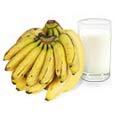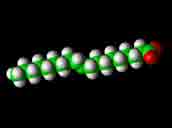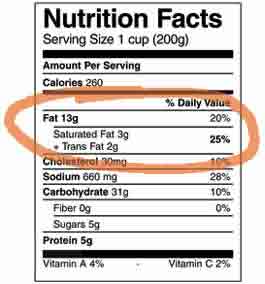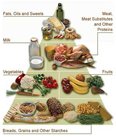|
Transfatsby Mirella Levin Transfats (otherwise known as Trans Fatty Acids or partially hydrogenated oils) are unsaturated fatty acids. This means that this particular fatty acid is able to form products by chemical addition. These fats are most commonly created in an industrial process where hydrogen is added to vegetable oils to make them more solid. This process is called partial hydrogenation. These fats will also lengthen the See figure 1 above right. These fats can be found in various different foods. However, the most common ones are fried things such as French fries, pizza dough, baked pastries, cookies and especially margarine, butter and shortening. You can see how much a specific food item has by looking at the “Nutrition Facts Label” (see fig. 1). Another way of determining the content lecel is to look at the ingredients list. However, you should be aware that they are often listed differently, for example as “partially hydrogenated oils”, “hydrogenated oils” or “shortening”. See Figure 2 above right Despite their negative effects on our health, these trans fatty acids are often used in the food industry today, despite their negative effects on the human body. Research has shown that by consuming a diet high in this type of fat, a person is at a much higher risk of developing atherosclerosis, stroke, type 2 diabetes and coronary heart disease. This type of fat also affects a person’s cholesterol (see article on cholesterol). They raise LDL (bad cholesterol) levels whilst reducing HDL (good cholesterol) levels. It is recommended that we limit our daily intake of this form of fat. It is suggested that to do so we should limit our intake to less than 1% of our total daily calories. For example, if you need 2,000 calories per day, only 20 of those calories should be from this type of fat. However, this means that you can only eat less than 2 grams per day. Whether we can limit ourselves to this extent is uncertain but cutting back (even if it’s only by a small proportion) will improve your health.
TOP of Transfats |
Subscribe to Age-well.org Ezine
Eat Well
Table of Contents
Eat-Well-Homepage
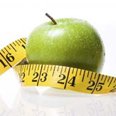
- Water
- Antioxidants
- Chocolate
- Caffeine
- Cherries
- Cranberries
- Maquiberries
- Salt
- Sugar
- Cholesterol and its Effect on Health
- Fruit & Vegetables - Fresh Versus Frozen or Canned
- Nuts, Beans and Pulses
- Monosodium Glutamate (MSG)
- Unsaturated Fats - The Right Fats for Health
- What are Transfats?
- Water
- 20 Benefits of Drinking Enough Water



All About Vitamins and Minerals

